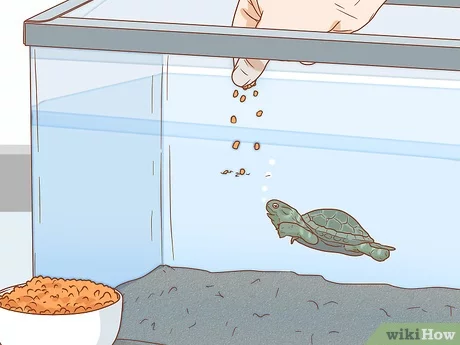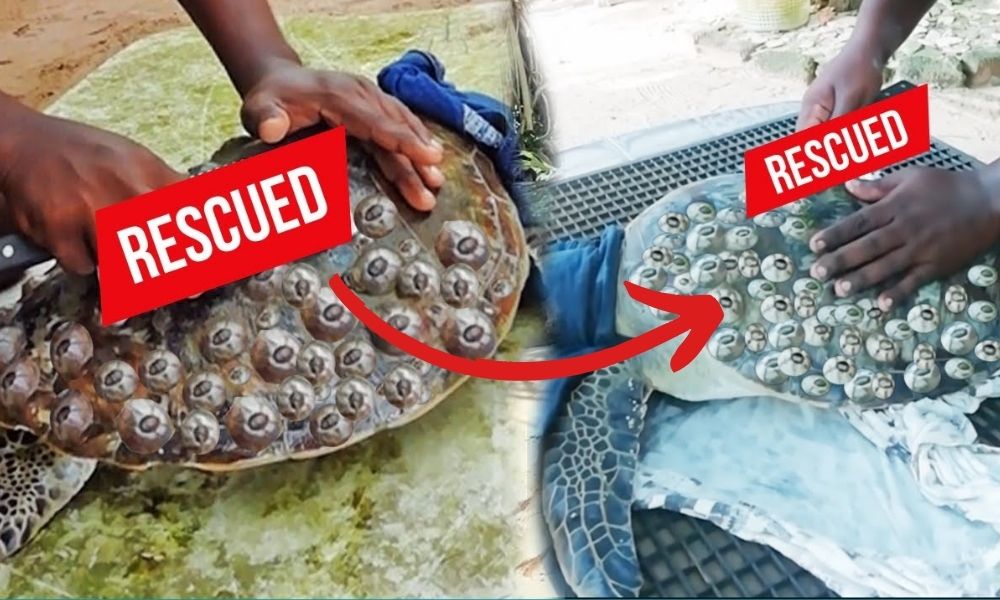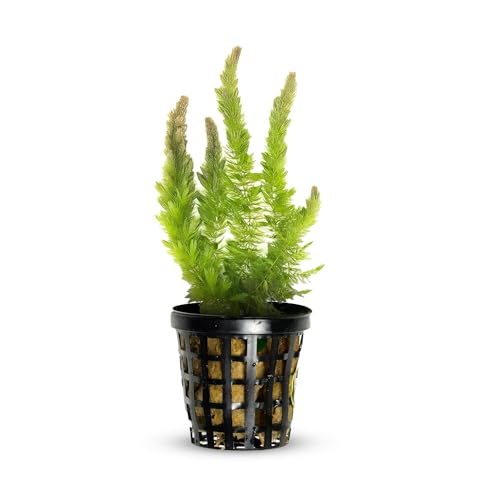To take care of your turtle, provide a spacious tank with clean water and a basking area. Feed it a balanced diet suitable for its species.
Turtles make fascinating pets but require specific care to thrive. Ensure they have a large tank with both water and dry areas. Clean the water regularly to prevent diseases. A UVB light is essential for their shell and bone health.
Feed them a balanced diet that includes turtle pellets, leafy greens, and occasional protein like insects or fish. Monitor their health and consult a vet specializing in reptiles if you notice any issues. Proper care ensures your turtle lives a long, healthy life. Understanding these basics helps you create a suitable environment for your shelled friend.
Essentials Of Turtle Care
Taking care of a turtle can be fun and rewarding. Turtles need a proper habitat, correct temperature, and suitable lighting. These essentials help ensure your turtle stays healthy and happy.
Choosing The Right Habitat
Your turtle’s habitat is its home. It needs to be safe and comfortable. Here are some key points:
- Size: The tank should be large enough for your turtle to move around. A 20-gallon tank is a good start for a small turtle.
- Water: Provide clean, fresh water. Use a water filter to keep it clean.
- Land Area: Turtles need a dry area to bask. Provide a platform or rock.
| Tank Size | Water Level | Dry Area |
|---|---|---|
| 20-gallon | Clean, filtered | Platform or rock |
Temperature And Lighting Needs
Turtles need the right temperature and lighting to stay healthy. Here are some tips:
- Water Temperature: The water should be between 75-85°F (24-29°C).
- Basking Area: The basking area should be warmer, around 85-90°F (29-32°C).
- Lighting: Turtles need UVB light for healthy shell and bones. Use a UVB lamp for 10-12 hours daily.
- Check the water temperature with a thermometer.
- Adjust the heat lamp to maintain the basking temperature.
- Use a UVB bulb to provide necessary light.

Feeding Your Turtle
Feeding your turtle is crucial for its health and happiness. Turtles have different dietary needs based on their species and age. This section will cover the types of food, feeding schedule, and quantities. Let’s ensure your turtle gets the best nutrition possible.
Types Of Turtle Food
Understanding the right food types is essential for your turtle’s diet. Below is a list of common food categories for turtles:
- Commercial Turtle Pellets: These are specially formulated for turtles. They provide balanced nutrition.
- Fresh Vegetables: Leafy greens like romaine lettuce, kale, and spinach are great. Avoid iceberg lettuce.
- Fruits: Offer fruits like apples, bananas, and berries in moderation.
- Proteins: Include insects, fish, and cooked chicken. Ensure they are safe for turtles.
- Aquatic Plants: Plants like duckweed and water hyacinth are good for aquatic turtles.
Feeding Schedule And Quantities
Knowing how often and how much to feed is important. Below is a table summarizing the feeding schedule and quantities:
| Age | Feeding Frequency | Quantity |
|---|---|---|
| Hatchlings (0-6 months) | Daily | Small amount, 5 minutes of eating |
| Juveniles (6-12 months) | Every other day | Moderate amount, 10 minutes of eating |
| Adults (1 year+) | Every 2-3 days | More food, 15 minutes of eating |
Feeding your turtle too much can lead to health problems. Always monitor their eating habits and adjust accordingly.
Maintaining A Clean Environment
Maintaining a clean environment is crucial for your turtle’s health. A dirty tank can lead to illness and discomfort. Learn how to keep your turtle’s habitat clean and safe.
Regular Cleaning Routine
A regular cleaning routine keeps the tank fresh. Follow these steps weekly:
- Remove your turtle to a safe container.
- Remove uneaten food and waste.
- Scrub the tank walls with a brush.
- Rinse the tank with warm water.
Deep cleaning should be done monthly. This involves:
- Removing all decorations and cleaning them.
- Replacing the water completely.
- Cleaning the filter and pump.
Filtering Water Properly
Proper water filtration is essential for a healthy tank. Choose a filter that matches your tank size. There are three types of filters:
| Filter Type | Description |
|---|---|
| Mechanical | Removes debris and particles. |
| Biological | Breaks down harmful waste. |
| Chemical | Removes toxins and odors. |
Combine all three types for the best results. Clean the filter regularly to ensure it works well. Replace filter media as needed to keep water clean.
Keep the water level stable. Turtles need both swimming and basking areas. Ensure your filter accommodates this.

Health Checks And Veterinary Care
Taking care of your turtle means regular health checks and veterinary visits. Turtles, like all pets, need attention to stay healthy. This section will guide you on recognizing signs of illness and scheduling regular check-ups.
Recognizing Signs Of Illness
Recognizing signs of illness in your turtle is crucial. Early detection can save your turtle’s life. Here are some common symptoms to watch out for:
- Loss of Appetite: Turtles stop eating when sick.
- Swollen Eyes: Swollen or puffy eyes indicate infection.
- Weight Loss: Rapid weight loss is a red flag.
- Labored Breathing: Difficult breathing may mean respiratory issues.
- Shell Discoloration: Changes in shell color can signal disease.
If you notice any of these symptoms, consult your veterinarian immediately. Keeping a close eye on your turtle’s behavior can help in early detection.
Scheduling Regular Check-ups
Regular veterinary check-ups are vital for your turtle’s health. Here’s a simple schedule you can follow:
| Age | Frequency of Check-Ups |
|---|---|
| 0-1 Year | Every 3 Months |
| 1-5 Years | Every 6 Months |
| 5+ Years | Annually |
During these check-ups, the vet will examine your turtle’s shell, eyes, and overall health. They may also run tests to ensure your turtle is free from parasites.
Always choose a vet experienced with reptiles. This ensures your turtle gets the best care possible.
By staying vigilant and maintaining regular check-ups, you can keep your turtle healthy and happy.
Turtle Handling And Interaction
Turtles are fascinating creatures that require special care and attention. Understanding how to properly handle and interact with your turtle can ensure a healthy and happy pet. This section will cover essential tips for safe handling and providing social stimulation.
Safe Handling Practices
Proper handling is crucial to avoid stressing your turtle. Always wash your hands before and after touching your turtle. This prevents the spread of germs. Support your turtle’s body with both hands. One hand should be under the shell, and the other on top. Avoid holding your turtle by its limbs or tail. This can cause injury. Be gentle and move slowly to avoid startling your turtle.
| Do’s | Don’ts |
|---|---|
| Support with both hands | Hold by limbs or tail |
| Wash hands before and after | Move quickly or jerkily |
| Be gentle and calm | Startle your turtle |
Social Needs And Stimulation
Turtles need mental stimulation to stay happy. Create an enriching environment with hiding spots and varied terrain. Offer different textures like smooth rocks, sandy areas, and grassy patches. Rotate toys and decorations to keep things interesting.
- Provide hiding spots
- Include varied terrain
- Rotate toys and decorations
- Offer different textures
Spend time interacting with your turtle daily. Talk to your turtle softly and offer treats by hand. This builds trust and strengthens your bond. Avoid overcrowding your turtle’s space with too many objects or other animals.
- Talk softly to your turtle
- Offer hand-fed treats
- Build trust and bond
- Avoid overcrowding the space
Hibernation And Seasonal Care
Taking care of your turtle involves paying close attention to hibernation and seasonal care. Turtles have unique needs depending on the time of year. Proper care ensures your turtle stays healthy and happy throughout the year.
Preparing For Hibernation
Before hibernation, your turtle needs to build up fat reserves. Feed it a nutritious diet rich in vitamins and minerals. Make sure your turtle is healthy before it begins hibernation. A sick turtle should not hibernate.
Provide a safe hibernation environment. Use a container filled with soil and leaves. Ensure the temperature stays between 40-50°F (4-10°C). Check your turtle’s weight regularly during hibernation. A significant weight loss could indicate problems.
Adjusting Care With Seasons
In spring, increase your turtle’s activity gradually. Provide more sunlight and fresh food. Check your turtle for any signs of illness as it wakes up from hibernation.
In summer, ensure your turtle has plenty of water. Keep its environment shaded and cool. Avoid overheating, which can be dangerous.
In fall, prepare your turtle for hibernation. Start reducing food intake and daylight exposure. Ensure it is healthy and has gained enough weight.
| Season | Care Tips |
|---|---|
| Spring | Increase activity gradually, more sunlight, fresh food |
| Summer | Plenty of water, shaded and cool environment |
| Fall | Reduce food intake, prepare for hibernation |
Common Turtle Species As Pets
Owning a turtle can be a delightful experience. Turtles are fascinating and low-maintenance pets. However, different species have unique needs. Understanding these needs is crucial for their well-being.
Species-specific Care Requirements
Every turtle species has distinct care requirements. These needs include habitat, diet, and temperature. Here are some common pet turtle species:
| Species | Habitat Needs | Diet | Temperature |
|---|---|---|---|
| Red-Eared Slider | Aquatic with basking area | Pellets, vegetables, insects | 75-85°F water, 90-95°F basking |
| Box Turtle | Terrestrial with hiding spots | Fruits, insects, vegetables | 70-80°F |
| Painted Turtle | Aquatic with basking area | Aquatic plants, insects, fish | 75-85°F water, 85-95°F basking |
Choosing A Turtle That’s Right For You
Choosing the right turtle is essential. Consider your living space, budget, and available time. Here are some tips to help:
- Red-Eared Slider: Great for beginners. Needs a large tank and regular cleaning.
- Box Turtle: Prefers land. Needs a secure, spacious enclosure.
- Painted Turtle: Requires both land and water. Needs a basking area and filtration system.
Think about the turtle’s size, lifespan, and activity level. Smaller turtles might be easier to manage. Some species live over 20 years, so be prepared for a long-term commitment.
Legal And Ethical Considerations
Taking care of a turtle isn’t just about feeding and housing it. You must also consider the legal and ethical aspects. These factors ensure your turtle’s well-being and help protect wild populations.
Understanding Local Regulations
First, you must understand local regulations. Different regions have rules about owning turtles. Some places ban certain species. Others require a permit.
Check your local wildlife agency’s website. It will provide the rules specific to your area. Ignoring these rules can lead to fines or confiscation of your turtle.
For example, some states in the U.S. ban the sale of turtles under 4 inches. This aims to reduce salmonella risk in children.
Responsible Turtle Ownership
Being a responsible turtle owner involves more than legal compliance. It also requires ethical considerations. Make sure your turtle comes from a reputable source.
- Avoid buying wild-caught turtles. They often suffer during capture and transport.
- Choose captive-bred turtles instead. They are healthier and adapt better to captivity.
Ensure you provide a proper habitat. This includes a clean tank, appropriate diet, and regular vet check-ups. Neglecting these needs can cause severe health issues for your turtle.
Also, think about the long-term commitment. Turtles can live for decades. Be prepared for a long-term responsibility.
| Consideration | Details |
|---|---|
| Legal Requirements | Check local laws and permits |
| Source of Turtle | Prefer captive-bred over wild-caught |
| Habitat | Clean tank, proper diet, vet visits |
| Long-term Care | Turtles can live for decades |
By following these legal and ethical considerations, you ensure a healthy and happy life for your turtle.

Frequently Asked Questions
How Do You Take Care Of A Turtle For Beginners?
To care for a turtle, provide a spacious tank with clean water. Maintain a basking area with UVB light. Feed a balanced diet of turtle pellets, vegetables, and occasional protein. Regularly clean the tank and monitor water quality. Ensure a stable temperature and handle gently.
Are Turtles Hard To Take Care Of?
Turtles require specific care, including proper diet, habitat, and temperature. They need regular cleaning and attention.
What Do Turtles Need To Survive In A Tank?
Turtles need a spacious tank, clean water, a basking area, UVB lighting, a balanced diet, and proper filtration. Ensure the water temperature stays between 75-85°F and the basking spot around 90°F. Regular tank maintenance is crucial for their health.
Can I Keep My Turtle In Water All The Time?
No, turtles need both water and dry land. They require a basking area to regulate their temperature and absorb UVB rays.
Conclusion
Caring for a turtle requires attention to its habitat, diet, and health. Ensure a clean tank, proper lighting, and nutritious food. Regular check-ups with a vet can prevent issues. By following these steps, your turtle will thrive and live a long, happy life.
Enjoy your journey as a responsible turtle owner!





Leave a Reply